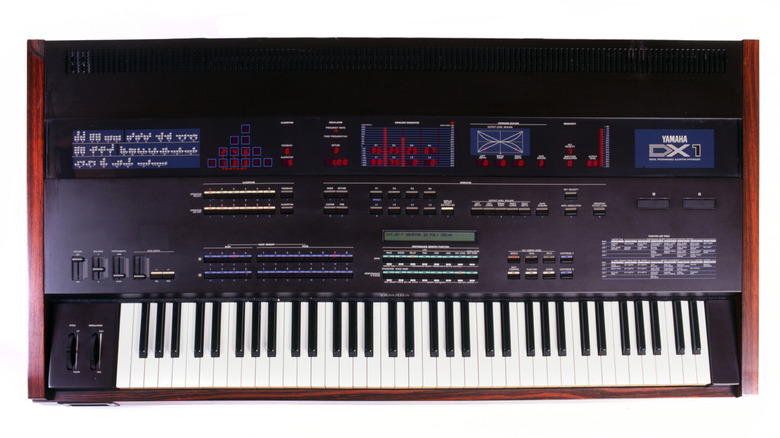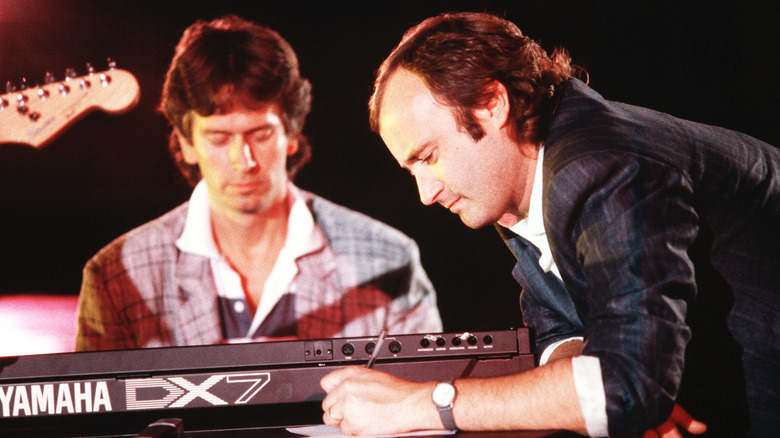Yamaha DX7 Vs DX1: What's The Difference Between These Classic Synthesizers?
As the 1970s turned into the 1980s, a significant change was taking hold in the music world in the form of the adoption of electronic instruments, namely synthesizers. Progressive rock bands like Genesis were among those who pushed synths to the forefront, but as the decade turned over, the music shifted in a different direction. Artists pushed synths in more of a vaguely punk rock or alternative rock direction, leading to a massive boom in the new general of synth-pop. Depeche Mode, Duran Duran, New Order, The Cure, and other enduring synth-heavy bands came of age in this era, with many others having more limited success. (Among them? Ricky Gervais, whose band, Seona Dancing, didn't break through in his native UK but secured a surprising legacy in the Phillipines of all places.)
During this time, some synthesizers were particularly popular. Out of reach of even most professionals were heavy-duty synths with voice sampling capabilities like the New England Digital Synclavier and the Fairlight CMI. Much more accessible were various synths from brands like Korg, Moog, and Yamaha, with Yamaha blazing a trail by establishing the first digital synthesizer to hit critical mass, the DX7. Roughly 150,000 DX7s were sold in its three years on the market — a sign of its versatility and the value it brought at its relatively low price. However, the same year it was released, Yamaha also dropped a souped-up version: The DX1.
Key synthesizer differences
The immediate differentiator between the Yamaha DX1 and DX7 is price and categorization. The DX7 was a mass-market synthesizer that launched in May 1983 at a ¥230,000 MSRP (just under $1,000 U.S. at the time of release, which is almost $3,200 adjusted for inflation), while the DX1 was a high-end professional model that dropped in December 1983 at an MSRP of ¥1,810,000 (a little over $7,700 U.S. at the time or an inflation-adjusted price in the $24,000 range). That isn't to say that the DX7 couldn't be used in a professional setting (see the above photo of Tony Banks playing one during a Genesis concert) so much as the DX1 was earmarked more for places like recording studios. To wit: Only about 140 DX1s were ever made.
Looking at the DX1, what makes it jump out most, cosmetically speaking, is the wood paneling that gives it a more premium look. This is joined by a much more premium build quality, like weighted wooden keys with the ability to detect key velocity and sensitivity. It also replaced the DX7's membrane buttons with more robust mechanical push buttons. With its ultra-premium build quality, though, the DX1 was prohibitively heavy and unwieldy to use outside of a studio environment. As a result, when the DX5 was released in May 1985 for a fraction of the DX1's price while jettisoning the extravagancies and keeping the best features (like basically being two DX7s in a single box), it effectively replaced the DX1.

